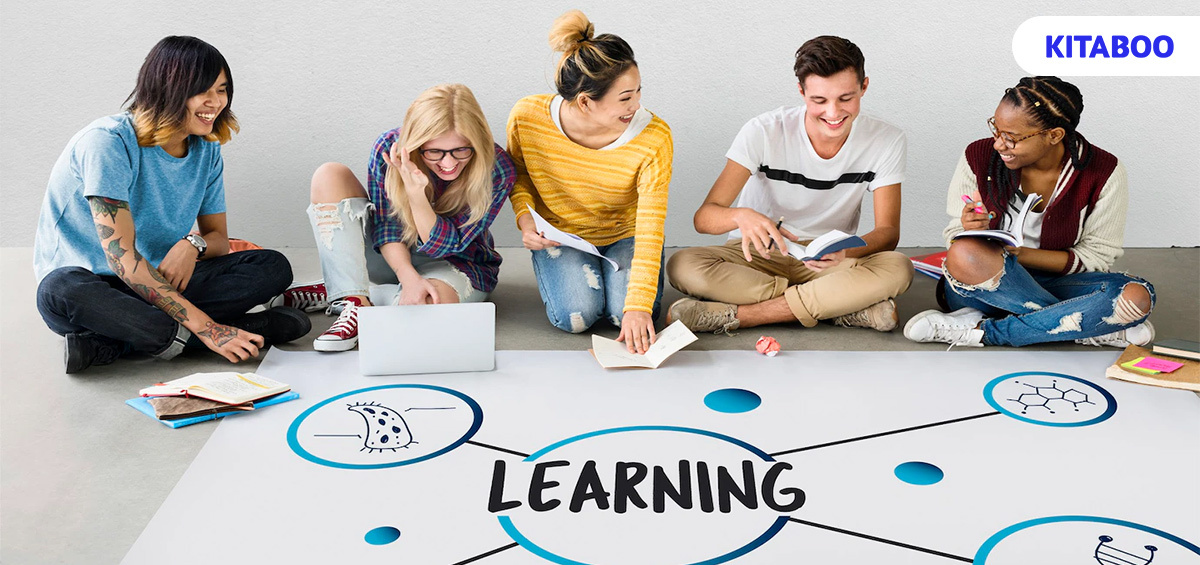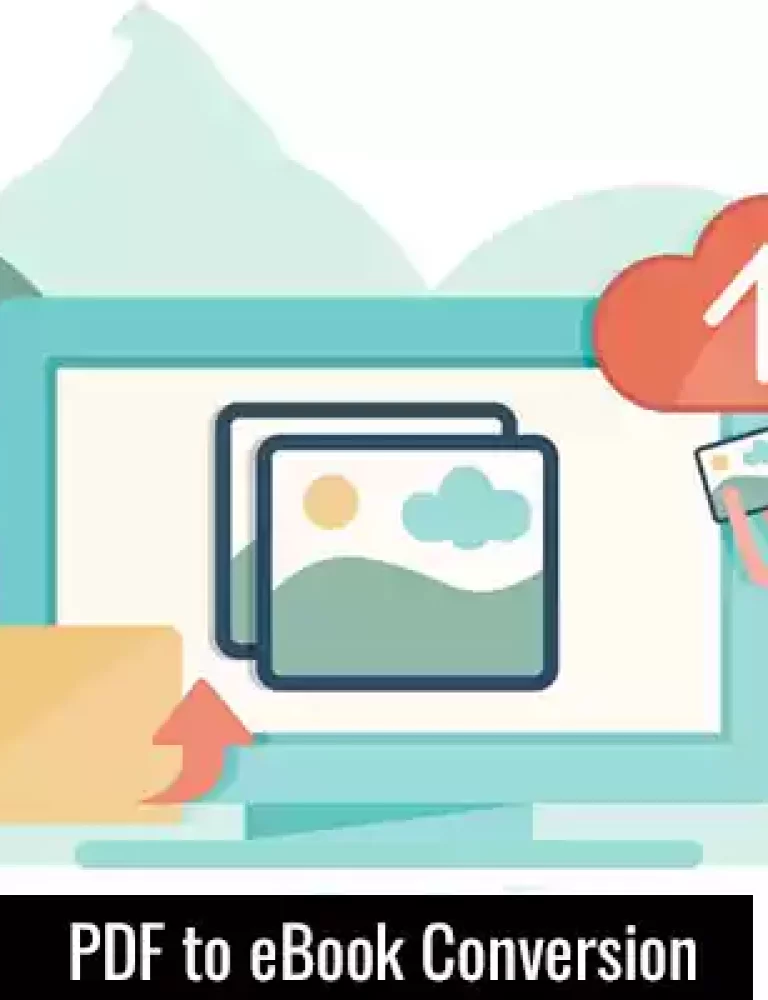Learning is a continuous process of acquiring knowledge, values, and skills. For learning to be meaningful, this process has to be in concurrence with the goals, requirements, and strengths of learners.
Yet, personal objectives should not exist in isolation within the broader educational context. Instead, they need to integrate seamlessly into it. This is where collaborative learning emerges as a catalyst for meaningful educational experiences.
Collaboration not only enriches the learning process but also creates avenues for heightened engagement. In this regard, educators can leverage cloud-based digital textbook platforms like KITABOO to foster collaboration and drive home the desired outcomes. It not only facilitates seamless interaction but also provides a platform for students to collectively tackle challenges, cultivating a dynamic environment for skill development.
This blog offers insights into how collaborative learning can enhance critical thinking and problem-solving skills. Read on!
Table of Contents:
I. What is Collaborative Learning?
II. Understanding Critical Thinking and Problem-Solving Skills
III. How Does Collaborative Learning Help in Fostering Critical Thinking and Problem-Solving Skills?
- Open-Ended Questions and Group Discussions
- Real-World Scenario Challenges
- Cooperative Learning Strategies
- Modeling and Scaffolding
- Peer Evaluation Activities
IV. Wrapping Up
What is Collaborative Learning?
Collaborative learning refers to a learning style that fosters teamwork and social interaction. It engages students in working together in pairs or small groups, pooling their collective intellectual resources to complete various learning tasks.
This learning style follows a student-centric approach, which allows learners to understand, learn, seek solutions, or create something through discussions and sharing of ideas with their peers.
When used effectively, collaboration can increase engagement by providing cognitive challenges. Additionally, it can boost self-esteem and motivate students to attain learning milestones.
Today, technological innovations have made it easier for educators to implement collaborative learning strategies. With the help of a platform like KITABOO, they can easily create and deliver educational content that facilitates collaborative discussion and learning. This way, students can actively participate in the learning process, share insights, and benefit from diverse perspectives.
Understanding Critical Thinking and Problem-Solving Skills
Both critical thinking and problem-solving are crucial skills that are deeply intertwined.
The ability to interpret, analyze, and evaluate information logically to make informed decisions is referred to as critical thinking. This skill helps individuals approach challenges with an analytical and strategic mindset. It enables them to weigh all aspects of a problem and consider potential outcomes based on the available options.
Problem-solving refers to the ability to analyze a problem, identify the best course of action, and implement the solution. This skill helps individuals understand the root cause of a problem and consider the existing options before taking a call.
Together, these skills form a powerful toolset for navigating complex situations, fostering informed decision-making, and driving effective solutions in various contexts.
How Does Collaborative Learning Help in Fostering Critical Thinking and Problem-Solving Skills?
Critical thinking and problem-solving skills enable individuals to understand the implications of their decisions, leading to improved decision-making abilities.
Here’s how educators can leverage collaborative learning to help students develop critical thinking and problem-solving skills:
Open-Ended Questions and Group Discussions
Open-ended questions and discussions count among the most effective ways of collaborative learning. They require students to share their reasoning, explain their perspectives, or justify their opinions. Such collaborative discussions boost critical thinking and problem-solving skills.
Educators can use open-ended questions to encourage students to think outside the box, explore different perspectives, and challenge their assumptions.
Real-World Scenario Challenges
Challenging tasks and scenarios related to real-world problems and situations are a great way to foster critical thinking and problem-solving skills. Educators can ask students to solve the challenges as part of their group activities.
By creating tasks and scenarios that engage students and captivate their curiosity, educators can motivate them to find the right solutions.
This approach serves as an ideal foundation for collaborative learning, where students are motivated to apply their knowledge and skills in significant, realistic contexts. In doing so, they benefit from a dynamic learning environment that fosters collective problem-solving and knowledge sharing.
Cooperative Learning Strategies
Cooperative learning strategies boost collaboration and communication among students. They enable students to gain exposure to diverse perspectives, opinions, and ideas.
Collaboration and communication also help students to develop qualities like respect, empathy, communication skills, etc. Such diverse perceptions and qualities play an essential role in developing a mindset for critical thinking and problem-solving.
Modeling and Scaffolding
Modeling and scaffolding are pedagogical strategies where educators exemplify the step-by-step process of problem-solving.
This method typically encompasses stages such as identifying the problem, developing potential solutions, brainstorming alternatives, experimenting with theories or ideas, and analyzing the results.
For effective modeling and scaffolding, educators can employ a variety of innovative techniques. These might include integrating content with visual aids like graphic organizers, employing ‘think-aloud’ strategies to verbalize the thought process, and using rubrics for structured evaluation.
Peer Evaluation Activities
Peer evaluation is a purposeful activity designed to enhance critical thinking and problem-solving skills among students. In this activity, students exchange constructive feedback on tasks or projects with their peers.
Educators can facilitate this by organizing students into small groups, where each student’s work is reviewed and critiqued by the others in turn. Such peer-to-peer collaboration allows students to become actively involved in the learning process.
This activity is not just a learning exercise; it’s a social process that fosters a deeper understanding through dialogue.
Wrapping Up
Collaborative learning is an impactful educational approach that can help students enhance their critical thinking and problem-solving skills effectively.
By encouraging students to collaborate on tasks and activities, educators can enhance their educational experience. This way, they not only enable students to strengthen their understanding of concepts and ideas but also help them improve essential interpersonal skills.
With the advantage of a well-recognized digital textbook platform like KITABOO, educators can easily engage students in collective learning activities. As an educator, you can leverage this platform to create interactive and engaging content that promotes group discussions and teamwork in the long run.
Connect with us to start a conversation.
Write to us at KITABOO@hurix.com for more info!
Suggested Reads:
Discover How An Ebook Conversion, Publishing & Distribution Platform Can Help You
Kitaboo is a cloud-based content platform to create-publish & securely distribute interactive mobile-ready ebooks.
You May Also Like
-
Convert PDF to eBook: Simple, Quick, and Effective
Blog,Digital Publishing,eBook solution / February 29, 2024
-
Student Resources: Your Pathway to Academic Achievement
Blog,Digital Publishing,eBook solution / November 16, 2023








